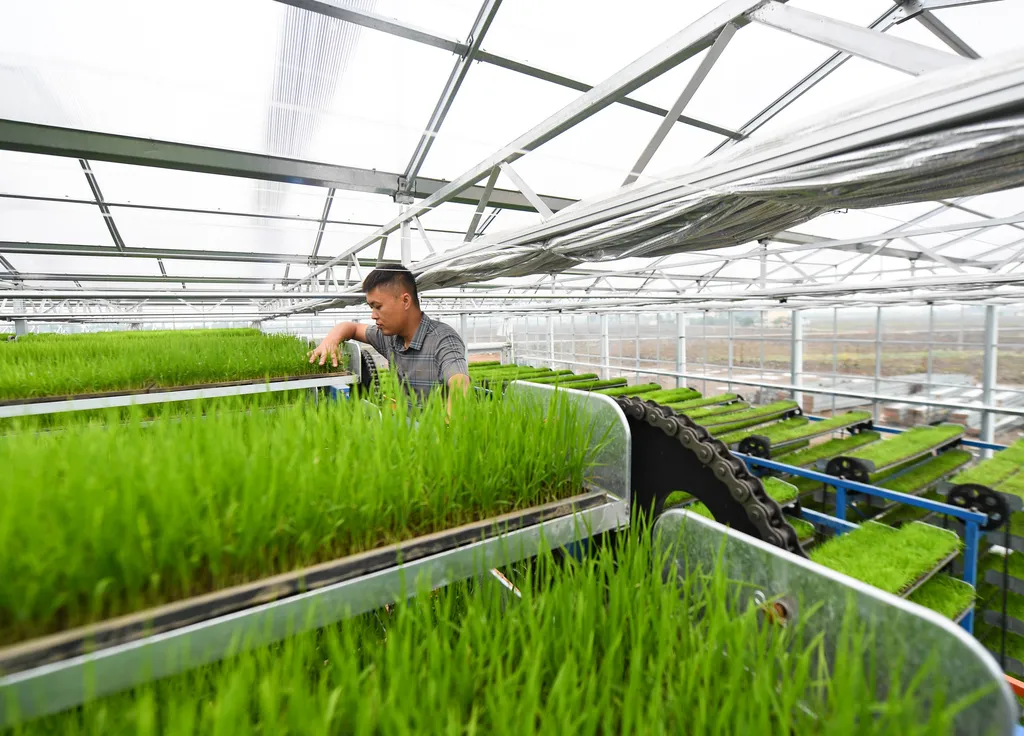In the heart of China, researchers have uncovered a novel mechanism in rice that could reshape our understanding of stress response and growth in crops. The study, led by Tao Shen from Nanjing Agricultural University, reveals how a specific enzyme, OsPrx20, plays a pivotal role in balancing rice’s response to environmental stress and its growth, with significant implications for agriculture and potentially the energy sector.
OsPrx20, a class III peroxidase, is a key regulator of reactive oxygen species (ROS) in rice. ROS are crucial signaling molecules that, when accumulated, can trigger long-term responses to environmental stimuli. Shen and his team discovered that OsPrx20 is phosphorylated at its threonine-244 site by a calcium/calmodulin-dependent protein kinase, OsDMI3. This phosphorylation enhances the plant’s tolerance to osmotic stress, such as drought, by scavenging intracellular ROS. However, this comes at a cost: it negatively affects the plant’s resistance to rice blast, a devastating fungal disease.
The study, published in the journal *Plant Communications* (translated to English as “Plant Messages”), found that overexpressing OsPrx20 enhances osmotic stress tolerance and promotes panicle enlargement with increased grain size. Conversely, knocking out OsPrx20 elevates intracellular ROS levels, boosting immunity against rice blast but reducing plant height and panicle size.
“This is a delicate balancing act,” Shen explained. “We’ve found that abscisic acid (ABA)-dependent phosphorylation of OsPrx20 at Thr-244 by OsDMI3 promotes intracellular ROS scavenging, enhancing osmotic stress tolerance without compromising growth, though at the expense of blast resistance.”
The findings could have significant commercial impacts, particularly in the energy sector. Rice is a staple crop worldwide, and improving its resilience to environmental stress could enhance food security and reduce the need for energy-intensive agricultural practices. Moreover, understanding how to manipulate ROS levels could lead to the development of crops that are more resilient to climate change, a critical factor as the world grapples with increasing temperatures and unpredictable weather patterns.
Shen’s research also opens up new avenues for exploring the multifunctional roles of class III peroxidases in other crops. “This study uncovers an essential regulatory mechanism that directly activates OsPrx20 within ABA signaling,” Shen said. “It highlights its multifunctional role across contrasting physiological processes, which could be exploited for crop improvement.”
As the world seeks sustainable solutions to feed a growing population, this research offers a promising path forward. By unraveling the complex interplay between stress response and growth in rice, Shen and his team have provided valuable insights that could shape the future of agriculture and contribute to a more energy-efficient food system.

